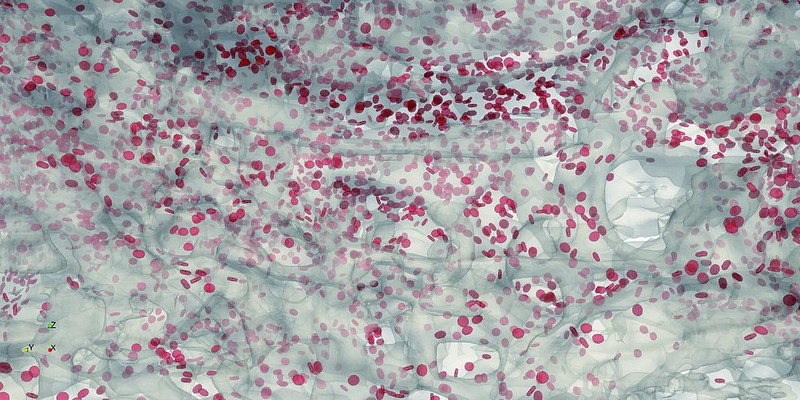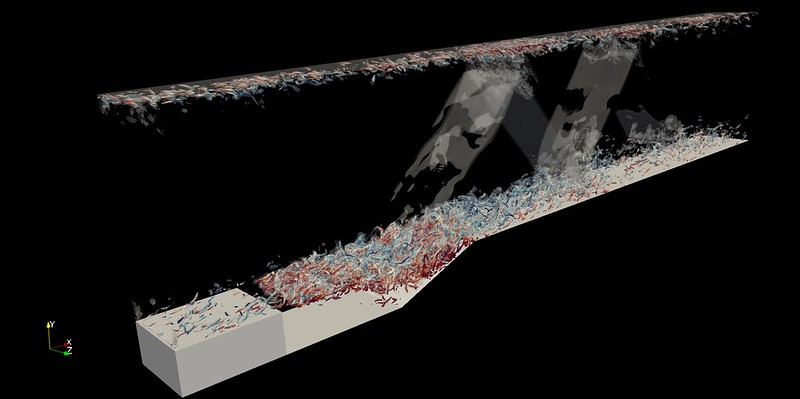In this webinar we invite entrants from the 2022 ARCHER2 Image and Video Competition to talk about their work, and the science behind their stunning images and videos.
This online session is open to all. It will use the Blackboard Collaborate platform.
Dale Hughes
Queen’s University Belfast, Physics
Acetylene Molecule subject to intense ultra-fast laser pulse, time evolution of electron probability, sound
The movie is a straightforward plot of electron density, derived from substantial Time-Dependent Density Functional Theory calculations carried out in recent months on ARCHER2. The sound is derived from the oscillating electric field induced by the laser interaction, and is unprocessed. In this simulation, we have directed a 1 femtosecond(fs) ultraviolet laser pulse along the molecular axis of a single Acetylene molecule, and allowed the time evolution to continue for around 1000fs. We immediately see significant oscillation, and at around 500fs we begin to hear a new oscillation, termed a dipole instability, that has increased in magnitude exponentially since the end of the initial pulse (1fs) until it is of comparable magnitude to the initial pulse. It reaches its peak as the population inversion induced by the initial pulse ends, as the electron excited by the pulse recombines with its hole. This dipole instability is the current subject of our work with ARCHER2.
Dr Qi Zhou
The University of Edinburgh, School of Engineering, Institute for Multiscale Thermofluids
Maternal blood flow through the intervillous space of human placenta

A snapshot of the maternal blood flow simulated using the immersed-boundary-lattice-Boltzmann method as a suspension of deformable red blood cells through the extravascular intervillous space of the human placenta. The simulation domain is reconstructed based on a realistic tissue volume (0.48mmx1.15mmx0.46mm) extracted from a term placenta after delivery. These cellular blood flow simulations are performed with HemeLB (a high-performance parallel lattice-Boltzmann code for large scale fluid flow in complex geometries), enabled by ARCHER2 supercomputing time through the UK Consortium on Mesoscale Engineering Sciences. Our project (supported by UKRI EPSRC EP/T008725/1, EP/T008806/1) sets out to develop a robust framework for image-based modelling of blood flow and solute exchange in patient-specific placentas, aimed at elucidating the structure-function relationship between the anatomical changes and compromised nutrient transport during placental disorders. The outcome of the project will inform effective clinical management and interventions of prevalent pregnancy diseases such as pre-eclampsia and fetal growth restriction.
Dr Jian Fang
Scientific computing department, STFC Daresbury Laboratory
The reflected shock-wave
The animation shows the results from a direct-numerical simulation of the cold supersonic flow in the combustor of a model scramjet. The cavity on the bottom wall is to hold the flame. The turbulent coherent structures are visualised with the isosurfaces of swirling strength, λci, coloured with local temperature. The shock-waves/compression-waves are represented with the isosurfaces of pressure gradient. It is interesting to see that the impingement of the shear-layer with the ramp of the cavity creates an oblique shock-wave, which bounces between the upper and bottom walls.


